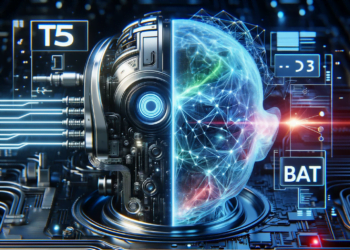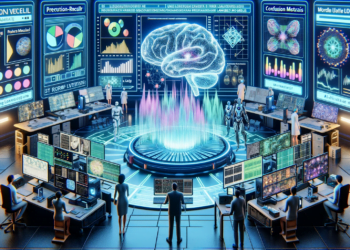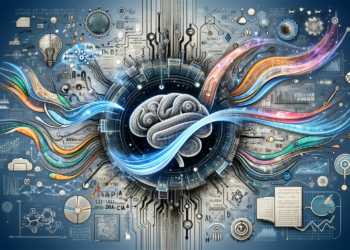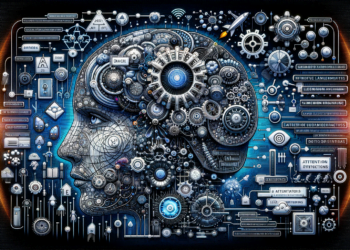Recurrent Neural Networks (RNNs) are at the forefront of language modeling and play a pivotal role in the field of artificial intelligence (AI). Unlike feedforward neural networks, RNNs introduce a loop within the network that allows for the persistence of information. This feature positions them as ideal for the sequential processing necessary in language modeling.
Key Theoretical Foundations
A basic RNN consists of neuronal units with loops back to themselves, enabling the retention of a memory of previous states. Mathematically, at time t, a hidden state h(t) is calculated as a nonlinear function ( h(t) = sigma(Wcdot x(t) + Ucdot h(t-1) + b) ), where (sigma) is the activation function, W and U are the weight matrices for the input and the recurrent connection, respectively, x(t) is the input, and b is the bias.
Advancements in RNN Architectures
The ability of a standard RNN to process information from long sequences is limited due to the problem of vanishing and exploding gradients. Innovations in architectures are primarily aimed at mitigating these issues.
Long Short-Term Memory (LSTM)
The LSTM introduces a gate structure with the aim of controlling the flow of information. This model has the ability to learn when to retain or forget information over time through forget gates, input gates, and output gates. The architecture has become a cornerstone for modeling long-range temporal dependencies in time series and text.
Gated Recurrent Unit (GRU)
Similar in spirit to LSTMs, GRUs were proposed as a simplified alternative with fewer parameters, facilitating training and computational efficiency. GRUs combine the forget and input gates into a single ‘update gate’ and merge the hidden state and memory cell, often showing comparable and, at times, superior performance to LSTMs.
Advancements in Training and Optimization Algorithms
Advancements have also reached the domain of training algorithms, with the development of optimization methods like Adam and RMSprop, which adapt learning rates intelligently for each parameter. Moreover, techniques such as Gradient Clipping are used to combat gradient explosion.
Emerging Applications
In practice, RNNs have been implemented in natural language modeling tasks for applications ranging from text generation and machine translation to speech synthesis. A relevant case study is their use in personalized recommendation systems, where they capture the sequentiality of a user’s interactions to predict future preferences with remarkable accuracy.
Moving Beyond Traditional RNN Architectures: Transformer
One cannot speak of language modeling without mentioning the Transformer, which, while not technically classified as an RNN, has dominated the recent AI scene. Its attention-based structure allows each word in a sentence to adapt information from every other word in a parallel fashion, overcoming the contextual limitations of RNNs.
Current and Future Challenges
A persistent challenge is creating language models that generalize from a few examples (few-shot learning) and are robust against adversarial or unconventional inputs. Furthermore, the magnitude of data required for training raises questions about the energy sustainability and viability of these systems.
Innovation Through Fusion of Techniques
A projection into the future reflects a trend towards “hybrid” models that integrate RNNs with other techniques such as Convolutional Neural Networks (CNNs) and Attention Mechanisms.
Conclusion
RNNs have marked a before and after in language modeling. Despite the emergence of new paradigms such as the Transformer, RNN architectures continue to evolve and find niche applications thanks to their adaptability and efficiency in certain contexts. With the concurrent development of more advanced techniques and improvements in conceptual understanding, the horizon for language modeling with artificial intelligence seems brighter than ever.






















